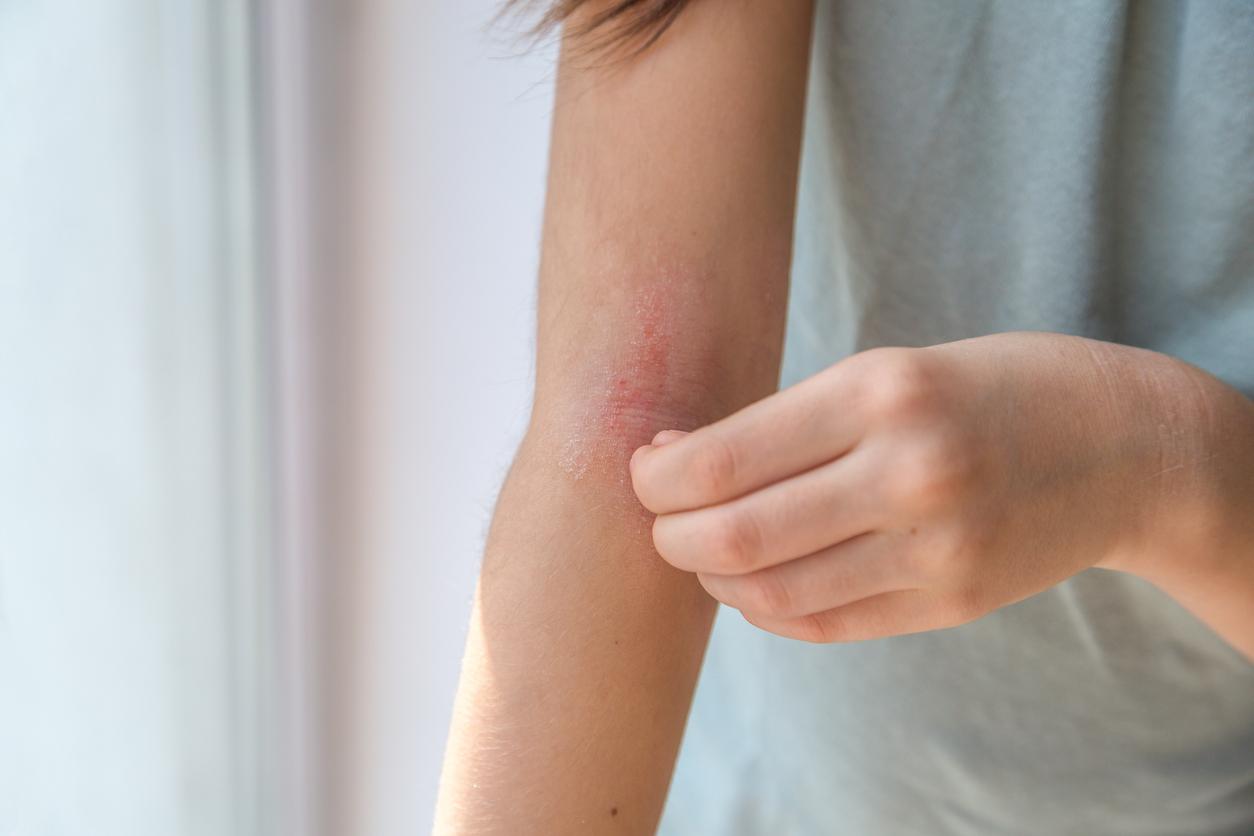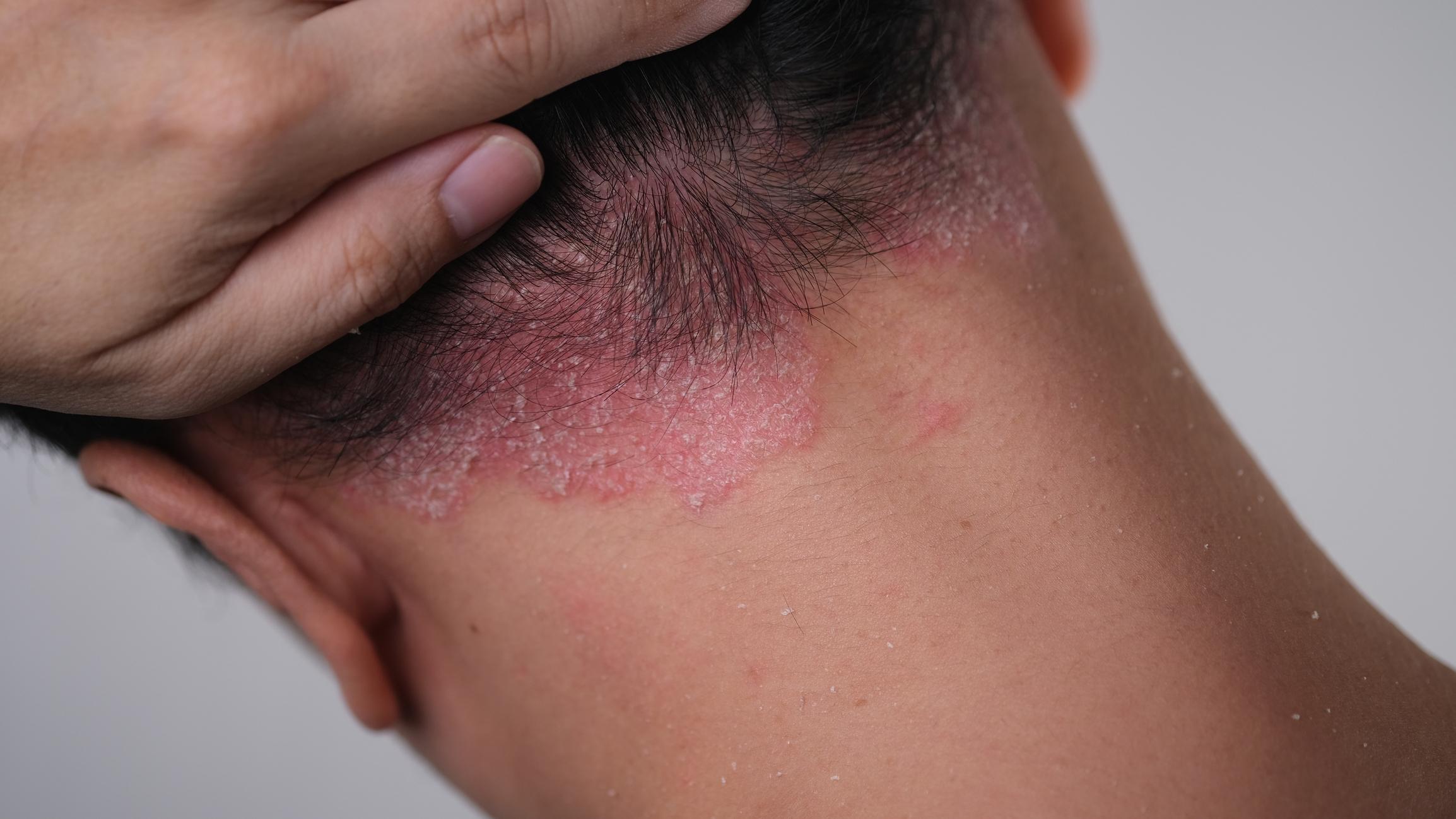Sun, sea salt, swimming pool chlorine are all factors that can damage the skin in summer. But sometimes rashes aren’t just allergies or sunburn. It can be eczema or psoriasis. How to make the difference ? Dermatologist and venerologist Marie-Estelle Roux explains how to “read” the ailments of her skin.
With the arrival of summer, is it normal to notice a change in your skin?
With the summer, during the holidays, the skin is not treated like the rest of the year. Many changes can therefore be observed. The sun, the heat, make the skin drier. The sun makes you tan, but not only! Sometimes it causes sunburn (burns), or an allergy. Anyway, when the skin is irritated, we can start by applying a moisturizer, or an after-sun milk, which contains soothing agents. Usually, if it’s just sun-related redness, the cream will soothe and make the discomfort go away. Sun creams can also cause allergies, but fortunately this is very rare. If it was this: stop using the product in question, hydrate yourself and do not expose yourself to the sun until the skin is relieved.
How to know if it is not in fact eczema?
Eczema is an inflammation of the skin, manifested by patches that are red, dry, and scaly, or sometimes oozing, and very itchy. There are two types of eczema: the atopic type, i.e. related to genetics and environment, or allergicthat is to say triggered by one or more allergens in contact with the skin.
Making the difference between atopic eczema and allergic eczema is not always easy, especially since these two forms can be associated in the same person. Atopic eczema is chronicgenerally present since early childhood, and concerns evocative areas of the body: the folds of the elbows, the hollows of the knees, the hands, the neck, the face, etc. The patches of eczema are poorly limited in this form -the. Allergic eczema is very acute : it occurs fairly quickly on skin that was healthy before. It is limited to the area of contact with the allergen.
How to distinguish eczema from psoriasis?
Psoriasis is another inflammatory skin disease. It is characterized by bright red patches, well defined, most often covered with very white and thick scales. Psoriasis also causes itching. The plaques are localized on evocative areas of the body: the scalp, the external auditory canals, the umbilicus, the elbows, the knees, the region of the sacrum, or even the palms of the hands and the soles of the feet.
Sometimes psoriasis presents as an eruption of small patches of a few millimeters or centimeters spread all over the body. We then speak of guttate psoriasis. Contrary to popular belief about the skin and external “attacks”, psoriasis is often improved by the sun and the sea.
Anyone can develop eczema or psoriasis or is it in the genes?
Eczema and psoriasis are multi-factorial diseases : there are many genes that can predispose to these two dermatoses, but this is not enough to trigger flare-ups. Other factors come into play: the environment(the climate, pollution, food), psychological factors (stress in particular), certain medications, irritating or allergenic products that come into contact with the skin.
Can methods such as meditation, sophrology, acupuncture help relieve?
Eczema, whether atopic or allergic, and psoriasis, have dedicated drug treatments, these are corticosteroid creams and emollient care (moisturizers). The techniques promoting relaxation or “letting go” can be very useful in the overall care, but cannot replace specific skin care. This is also explained by the fact that mood and stress can trigger flare-ups of eczema or psoriasis in genetically predisposed persons, or aggravate pre-existing lesions.
Faced with new skin lesions, when is it necessary to consult?
A doctor should be consulted when skin lesions are chronic. That is, beyond 6 weeks. Or simply when the discomfort caused (itching for example) alters the quality of life : sleep, appetite, self-esteem, relationship with others… At this point, do not hesitate to consult.
Read also:
Coronavirus: why confinement gives us dry skin?
6 moisturizing active ingredients that change from shea


















